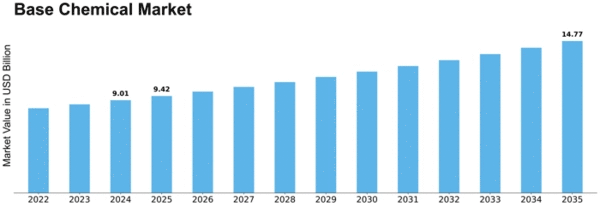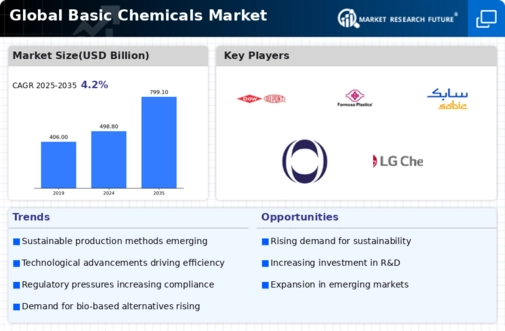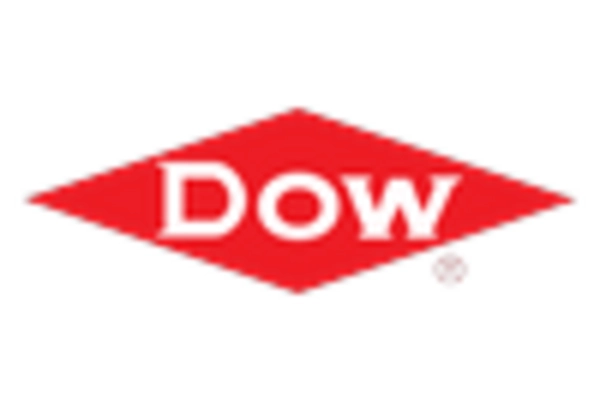Base Chemical Size
Base Chemical Market Growth Projections and Opportunities
The Base Chemical Market, comprising fundamental chemical compounds used as building blocks in various industries, is influenced by a multitude of factors that collectively shape its growth, trends, and overall dynamics.
Global Economic Conditions:
Economic factors such as GDP growth, industrial production, and consumer spending have a direct impact on the demand for base chemicals. Economic downturns may lead to reduced industrial activities and consumer demand, affecting the overall market dynamics. End-Use Industry Applications:
Base chemicals serve as essential raw materials in various industries, including chemicals, plastics, pharmaceuticals, agriculture, and manufacturing. Market dynamics in each sector, such as production levels, technological advancements, and regulatory requirements, influence base chemical demand. Raw Material Availability and Prices:
Fluctuations in raw material prices, such as crude oil, natural gas, and minerals, impact base chemical production costs and pricing. Market dynamics are influenced by factors such as supply-demand imbalances, geopolitical tensions, and commodity market trends. Technological Advancements in Chemical Manufacturing:
Ongoing technological advancements in chemical manufacturing processes contribute to improvements in efficiency, sustainability, and product quality. Innovations such as process automation, catalytic conversion, and green chemistry drive market dynamics and competitiveness. Regulatory Compliance and Environmental Standards:
Adherence to regulatory standards and environmental regulations is essential in the base chemical industry. Market dynamics are influenced by compliance with regulations governing product safety, emissions control, waste management, and chemical handling practices. Trade Policies and Tariffs:
International trade policies, tariffs, and trade agreements can impact the global flow of base chemicals. Changes in trade regulations, import tariffs, and trade disputes influence market dynamics, pricing, and competitiveness. Energy Prices and Production Costs:
Energy prices, including electricity, natural gas, and oil, significantly impact base chemical production costs. Market dynamics are influenced by factors such as energy market volatility, energy efficiency measures, and investments in renewable energy sources. Market Competitiveness and Industry Consolidation:
The base chemical market is characterized by competitiveness and industry consolidation. Companies engage in mergers, acquisitions, and strategic alliances to expand their product portfolios, increase market share, and improve competitiveness. Consumer Preferences and Sustainability Trends:
Increasing consumer preferences for sustainable products and environmentally friendly manufacturing processes influence base chemical demand. Market dynamics are shaped by consumer awareness of sustainability issues and preferences for eco-friendly products. Technological Integration in End-Use Sectors:
Technological advancements and innovation in end-use sectors influence base chemical specifications and demand. Market dynamics are shaped by the integration of advanced materials and technologies in industries such as electronics, automotive, and pharmaceuticals. Supply Chain Resilience and Logistics Management:
Supply chain resilience and logistics management play a crucial role in the base chemical market. Market dynamics are influenced by factors such as transportation costs, supply chain disruptions, and inventory management practices. Pandemic Impact and Recovery Trends:
The COVID-19 pandemic has had significant short-term and long-term impacts on the base chemical industry. Disruptions in supply chains, changes in consumer behavior, and shifts in demand patterns influence market dynamics and recovery trends in the post-pandemic era.


















Leave a Comment